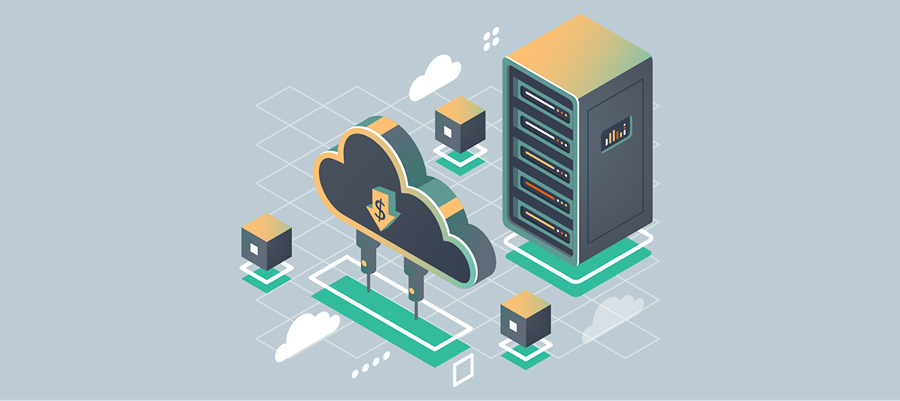For most of us, our experience with the cloud is the monthly bill from Google or Apple. We do not care much because it does not make up even one percent of our monthly household income. But for technology businesses with large amounts of data to store, process and manage, cloud-related costs can be one of the top two expenses along with payroll.
Global spending on cloud will cross $600 billion in 2023 and by 2026, Gartner predicts public cloud spending will exceed 45% of all enterprise IT spending, up from less than 17% in 2021.
Studies show that monthly cloud spending has increased between 50-100% for leading brands like Coca-Cola, HSBC, J&J, Visa, Panasonic and 3M in the last five years.
In March 2019, eyebrows were raised when Pinterest’s IPO documents stated it would have to pay AWS at least $440 million for cloud services usage over the next four and a half years to reach its minimum commitment – that’s $750 million in 6 years!
Lyft was in the same boat – committed to paying AWS $300 million by the end of 2021 for cloud computing services – that’s $8+ million to AWS every month!
The U.S. Producer Price Index (PPI) reported a five month high in September beating predictions by economists. The overall increase in energy prices will translate into escalating costs for data processing, hosting and related services as well, a category in which cloud computing is an important contributor. Cloud providers may want to pass on to customers at least some of the huge costs they incur for running large language models (LLMs) and cooling massive DPU/GPU clusters.
According to a study by marquee VC firm Andreessen Horowitz, software companies typically spend 75% to 80% of COR (cost of revenue) on the cloud, which amounts to a staggering $100 billion markdown on the market value of public software companies due to cloud impact on margins. The high cost of the cloud has prompted a migration, as software companies move data and applications to third-party cloud efficiency solutions, or to special-purpose hardware.
Cloud-first strategies may be slowly turning counter-productive, and in many cases, ROIs are diminishing, triggering a major cloud exodus. Indiscriminate cloud adoption has given rise to new challenges, like spiraling costs, increasing complexity and restrictive vendor lock-in.
Ironically, the leading cloud storage provider, Dropbox, exited the cloud, saving $75 million, and they’re not alone. Ahrefs, a provider of online SEO tools based in Singapore, estimated they’ve saved over $400 million by running their infrastructure in a colocation data center instead of in the public cloud.
Most companies find it hard to justify moving workloads off the cloud given the sheer magnitude of such efforts and the penal fee cloud providers may slap them with for premature exit.
While customers don’t pay for data when it goes in, moving data from cloud instances incurs egress charges that add up fast. For example, when Apple and Netflix pulled data from their cloud providers, they got served with invoices of $50 million and $15 million, respectively. Imagine if this happens to a smaller company that doesn’t have the deep pockets to honor the fee.
A better alternative would be to leverage AI-powered automation to optimize cloud spend. But to enable this, businesses will need to ensure they have two more components in place: observability and ownership.
Observability
While the cloud is easy to use, it’s usage is complex to track, especially with so many teams involved. The costs are variable too depending on the services used, resources consumed, and the time of day or week. But with new FinOps tools, observability into cloud resource utilization is possible with real-time alerts when cloud cost anomalies are detected.
Ownership
Though the cloud is an enterprise resource utilized by multiple teams, nobody tends to own it! Increasingly, business leaders, especially CFOs, are realizing how easily and quickly escalating cloud costs can put organizations on the self-destructive path to Chapter 11. A dedicated FinOps leader is necessary for every business with substantive cloud spending, empowered to erect guardrails across the organization and accountable for setting cloud budgets and negotiating favorable contracts. FinOps as a discipline is still new, but democratizing it across the organization can add tremendous value.
AI-powered Automation
Businesses are saving millions of dollars by deploying AI-powered automation tools to optimize cloud costs. By leveraging ML-driven cluster and pod autoscaling, location optimization, and cost-aware workload scheduling, organizations can cut cloud costs by up to 50%.
Moving away from solely computing with hyperscalers and adopting a multi-cloud approach that includes other cloud computing providers (Lumen, Akamai, Equinix, Rackcorp, DigitalOcean), distributed clouds, better hardware selection, no binding contracts, etc., can add significantly to the savings while offering greater control and never before flexibility with your cloud journey.
The good news is all of these are possible today with new-age AI-enabled platforms like Webscale CloudFlow that offer deep observability and ML-driven automated workflows for cloud cost optimization while assuring application performance, bullet-proof security and zero-ops container orchestration.














